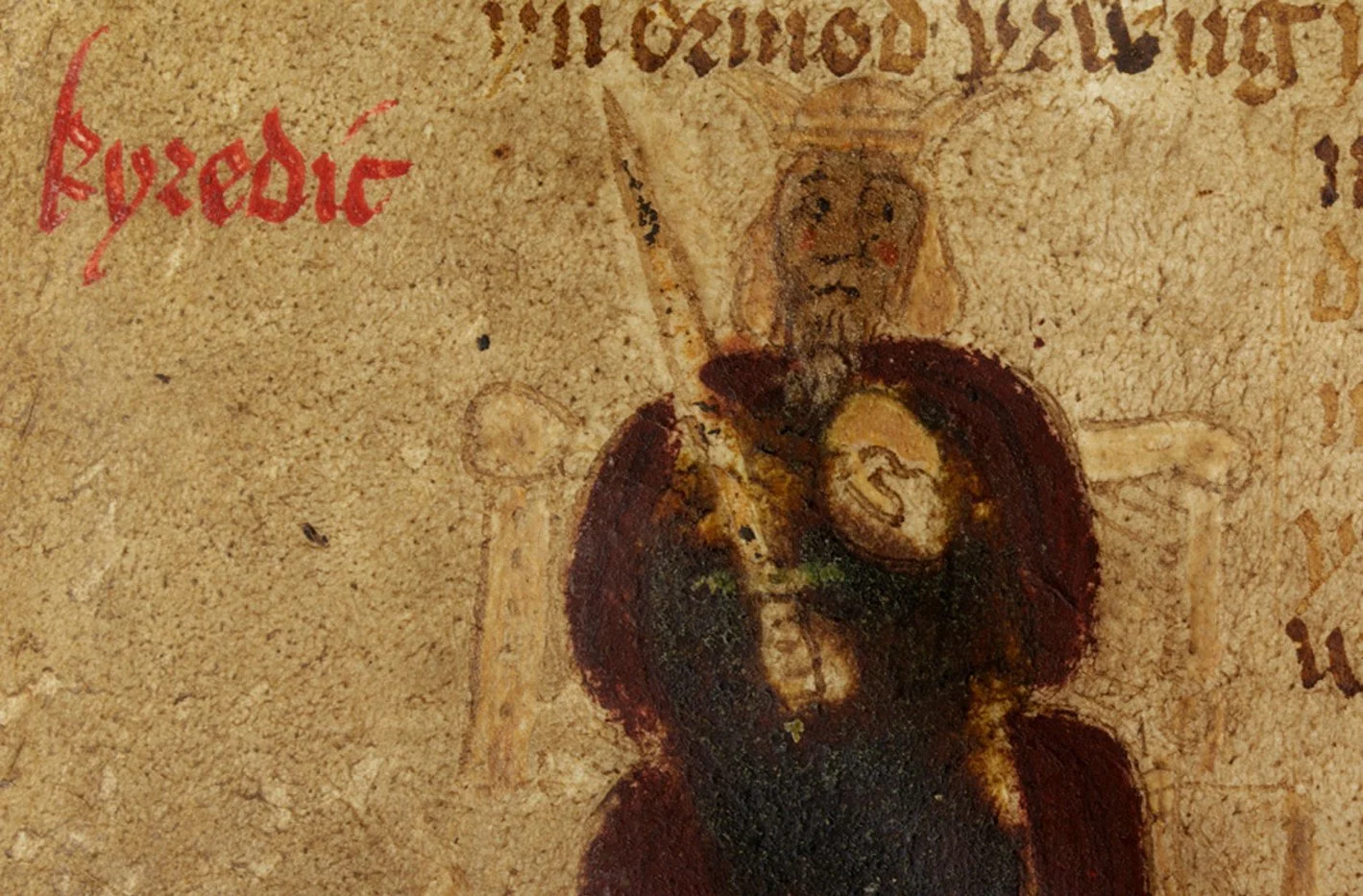Wessex founder Cerdic’s possible final resting place has emerged more than 1,000 years after it was named in an ancient royal charter.
Cerdic is an enigmatic figure from the same era of post-Roman British history as King Arthur. This warlord carved out a realm after bloody battles in Hampshire during the sixth century.
While depicted as an Anglo Saxon invader, his reign is shrouded in mystery because his name and that of several descendants are Brittonic and many scholars believe his rule began several decades later than stated in the Anglo Saxon Chronicle.
In the charter Edward the Elder, king of the Anglo Saxons and son of Alfred the Great, granted 10 hides to Winchester Cathedral, which was roughly 11,000 acres and now largely makes up St Mary Bourne parish in Hampshire. The charter, dated to 900 AD, featured various landmarks to show the boundary of the land, including ‘Ceardices Beorg’ in Old English that translates as ‘Cerdic’s Barrow’.
Inspired by research from academic George Grundy, the investigation discovered a burial mound in the exact location of Cerdic’s Barrow has been identified in Hampshire County Council’s Historic Environment Records. Although the tumulus has now been ploughed over, aerial photography in the 1960s and 70s showed traces of a massive barrow measuring 72ft in diameter. With a height of up to 12ft, this would have been a spectacular feature of the landscape.
Author Paul Harper, who carried out the research for a new book on Cerdic, said: “The exciting discovery has brought the story of Cerdic from a lost period of British history to life. This could be overwhelming proof that Cerdic was not just a product of fantasy in the chaotic aftermath of post-Roman Britain but a real warlord who forged a powerful realm which evolved into the nation of England. Barring King Arthur, no other figure from the early medieval period achieved such legendary status.”
This barrow’s location near Andover in Hampshire was worked out by pinpointing landmarks from the 10th century charter before and after. This included the Roman Road, a ‘Willow Grove’ (Withig Grafe) next to a wood which had a former watercourse running alongside, where such trees are traditionally found, and a ‘Barrow of the Ash Tree’ (Aesees Beorge) still marked on Ordnance Survey maps on the nearby Apsley Farm.
After his death, Cerdic was buried in a new mound or most likely a reused Bronze Age barrow. Such a practice was commonplace during the early Anglo-Saxon period based on a study which documented 334 examples of ancient monuments and structures being reused for burials between the fifth and eighth centuries*.
Cerdic’s Barrow was situated on a hill near an ancient trackway known as the Harrow Way used by Bronze Age tin traders between Kent and Devon and close to a huge Offa’s Dyke style ditch that may have extended to the Wiltshire border in Chute parish around eight miles away. The former Roman Road called the ‘Portway’, between Old Sarum in Wiltshire and Silchester in Hampshire, was also visible in the distance.
Harper said: “It was no accident that Cerdic’s Barrow can be found at this site because it was a very public statement of power near ancient roads and a warning to his enemies in modern day Wiltshire that they could not miss in the shape of a huge burial mound. Cerdic was among a number of warlords fighting for territory in post-Roman Britain and his final resting place was deliberately placed with his rivals in mind. The message was clear that the land belongs to the Cerdicing dynasty and they enter at their own peril.”
In addition, Harper believes this corner of Hampshire also had sentimental value for Cerdic because the charter contains references to ‘haga’ and ‘hagan’, which are often associated with wooded enclosures for deer, and hunting the animals was a popular pastime for wealthy Roman and Anglo-Saxon nobles.
With permission from the landowners, Harper hopes in future there may be an archaeological geophysical survey of the site.
Paul Harper’s new book – Cerdic: Mysterious dark age king who founded England – is being released by Pen & Sword on April 30, 2024. https://www.pen-and-sword.co.uk/CERDIC-Mysterious-Dark-Age-king-who-founded-England-Hardback/p/49849
Sources : Paul Harper – Press Officer at Middlesex University and Author







